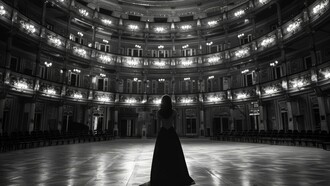The tiles of Morocco, “Zellij,” is a Moroccan mosaic heritage. It is handcrafted with precision and great skill, an ancient tile that has great demand internally and externally, even of the temptations of modern life.
Zellij making is one of the art forms that most expresses the originality of Moroccan architecture as it relies on simple raw materials, primitive mechanisms, and primarily the skill and creativity of the traditional craftsman to enter into the architecture of the palaces and historical monuments.
The Zellij is a product with traditional characteristics that combines its humble primary ingredients with the skill of the Moroccan artisan who specializes in this profession.
The Moroccan artisans, especially in the city of Fez, are specialized in this industry and have inherited its secrets. Moroccan artisans still pass down the secrets of this fine art form from generation to generation. This has enabled Moroccan manufacturers to become the only ones in the world that are capable of creating and manufacturing Zellij. This has been done for centuries and explains the wide spread of this art in various aspects of Moroccan life. Moroccan artisans are working in various parts of the world, whether to restore monuments and urban structures that were decorated with Moroccan traditional tiles, or to build and decorate palaces and facilities with this Moroccan style.
The peculiarities of the Moroccan tiles
The craft of the Moroccan tiles is considered a delicate and complex profession, requiring special and precise skills. It is also one of the ancient artistic crafts that constitute the cornerstone of Moroccan architecture.
Historically, Morocco and Andalusia have specialized in tile making and creativity, which appears in mosques, schools, palaces, gymnasiums and other architectural facilities in Morocco and Andalusia, which are considered among the regions that have an important spread of this type of art within historical urban structures.
The Moroccan tiles are used mainly for beautification and decoration. Interlocking geometric shapes are the parts that make up the Moroccan Zellij, and their sum consists of an attractive coloured shape. Moroccan tiles differs from Persian tiles in that the latter is made of ceramic in the shape of squares and rectangles, and before cooking it in ovens, it is coloured with bright colours and the required writings are written on it with exquisite curves and designs. After being cooked, it shines with special materials before taking its place on the ceilings and walls. As for writing in Moroccan tiles, the faience method is not used, but rather it is used in a different way, such that the squares are taken out of the oven, and the required writing is engraved on them.
The process of making Moroccan Zellij
Zellij making is one of the most artistic forms that express and embody the originality of Moroccan architecture, skill, artisanship and creativity of the traditional Moroccan makers.
This industry, which requires extreme precision and skill, relies on several stages for completion. It starts with preparing the raw material, through engraving it, drawing lines, and assembling the pieces to become a masterpiece of the utmost magnificence and precision. It is then used to decorate buildings, palaces, and historical monuments, giving them a special aesthetic character.
The making of Zellij depends on very simple mechanisms and tools, but what distinguishes it in particular is that it is practiced by creative craftsmen who inherited this craft and this passion from father to grandfather, thus contributing to the preservation of this unique and authentic Moroccan heritage.
In creating these unique pearls and antiques, the craftsman of tiles relies on simple components and mechanisms that include clay, a wooden board, metal dyes, wooden hammers, and a special furnace, taking advantage of the experience and skill that he has accumulated over many years to create extremely beautiful and precise shapes and drawings.
Traditional artisans of tiles contribute to preserving the creative and artistic specificity of the sector, and highlighting the genius of the Moroccan traditional artisan’s hand and the precision of his design and creativity.
Fez is the capital of Moroccan tiles
The city of Fez is at the top list of Moroccan cities in the field of Zellij, as it was and still is a major home for practicing this craft, which is embodied in the historical monuments located in Fez (the scientific capital of the Kingdom of Morocco). It is classified as a human heritage since 1981, and its availability of a national reservoir for grey clay exceeds 85 thousand tons per year. The national demand does not exceed 60 thousand tons per year.
The Kingdom's scientific capital includes the largest infrastructure for clay production in the Benjellik region, which extends over an area estimated at about 27 hectares and has more than 250 traditional production units.
While the Fez-Meknes region alone includes thousands of traditional artisans in the clay and pottery sector, they clearly contribute to the advancement of the art of Moroccan decoration and architecture, and the creation of masterpieces and artistic pearls of the utmost magnificence and precision.
In every nook and corner of the Moroccan city of Fez, history is present, and memory stands as a witness to the civilization and heritage of the city, evident in its magnificent architecture and palaces, which UNESCO classifies as a world human heritage.
Perhaps what makes its ancient architecture and palaces so luxurious is the traditional Moroccan Zellij with a Fez touch that differs from that of Tetouan or Marrakesh.
Tiles or Zellij creation have an ancient traditional artistic craft considered one of the most expressive art forms linked to Moroccan architecture, as some ancient artisans classified it as the most beautiful and best Arabic craft of decorating buildings such as houses, luxurious palaces, mosques, etc.













